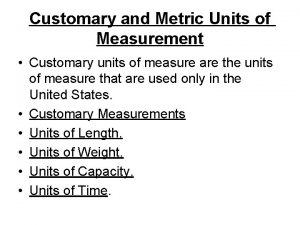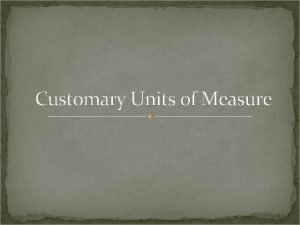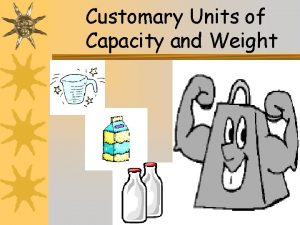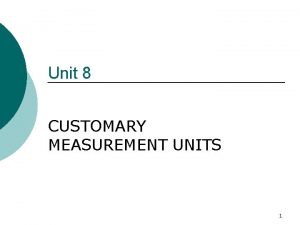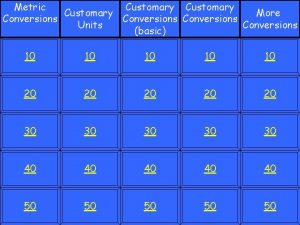The Customary System Lesson 5 7 The Customary








- Slides: 8

The Customary System Lesson 5 -7

The Customary System The customary system of measurement was established in 1824. Today, it is still used by the United States and some other countries. Unlike the metric system, the customary system does not use a base unit and prefixes. Each unit has a separate name.

The Customary System

Identifying Units • Determine which unit you are measuring (length, weight, or capacity) • Choose the most appropriate unit within that measure. • Be careful: ounces measure WEIGHT, but fluid ounces measure CAPACITY.

• You can describe 128 ounces of juice as 16 cups, 8 pints, 4 quarts, or 1 gallon. Usually the most appropriate name is the e one with the smallest number!! Quantity Measurement Less Helpful Measurement Weight of a person 160 pounds 2, 560 ounces Distance from home to school About 1 mile About 63, 360 inches

Choosing A Unit of Length • Flagpoles Choose an appropriate customary unit of measure to describe the height of a flagpole • The unit “mile” is too large and the unit “inches” is too small. Use feet or yards.

Choosing A Unit of Weight • Ice What customary unit describes the weight of a bag of ice? • The customary units that describe weight are ounces, pounds, and tons. The weight of a bag of ice is best described in pounds.

Choosing A Unit of Capacity • Beverages Choose the appropriate customary unit of measure to describe the amount of lemonade in a pitcher. • The customary units that describe capacity are fluid ounces, cups, pints, quarts, and gallons. The capacity of a pitcher is best described in quarts.


